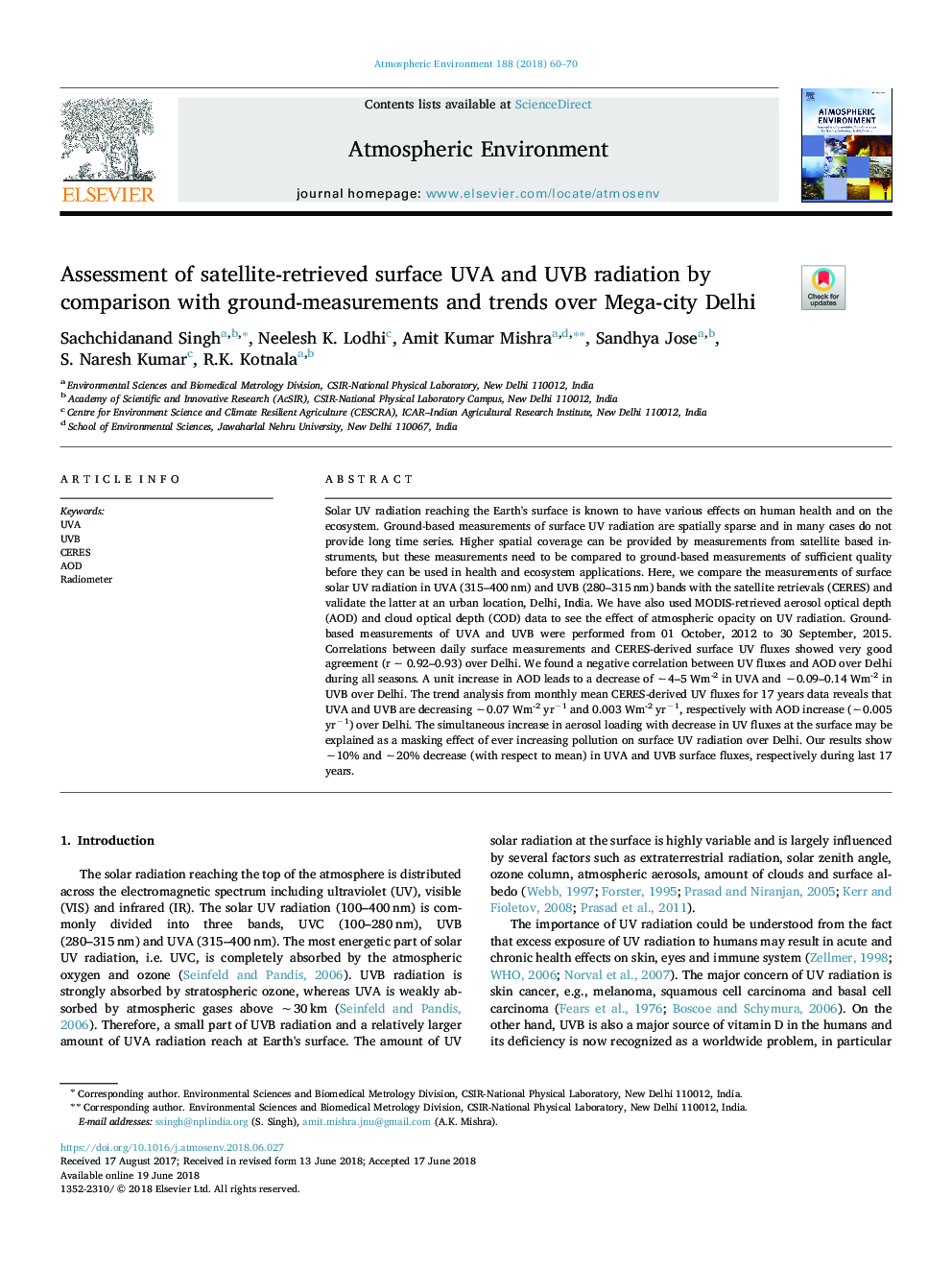| کد مقاله | کد نشریه | سال انتشار | مقاله انگلیسی | نسخه تمام متن |
|---|---|---|---|---|
| 8863566 | 1620286 | 2018 | 11 صفحه PDF | دانلود رایگان |
عنوان انگلیسی مقاله ISI
Assessment of satellite-retrieved surface UVA and UVB radiation by comparison with ground-measurements and trends over Mega-city Delhi
دانلود مقاله + سفارش ترجمه
دانلود مقاله ISI انگلیسی
رایگان برای ایرانیان
کلمات کلیدی
موضوعات مرتبط
مهندسی و علوم پایه
علوم زمین و سیارات
علم هواشناسی
پیش نمایش صفحه اول مقاله

چکیده انگلیسی
Solar UV radiation reaching the Earth's surface is known to have various effects on human health and on the ecosystem. Ground-based measurements of surface UV radiation are spatially sparse and in many cases do not provide long time series. Higher spatial coverage can be provided by measurements from satellite based instruments, but these measurements need to be compared to ground-based measurements of sufficient quality before they can be used in health and ecosystem applications. Here, we compare the measurements of surface solar UV radiation in UVA (315-400â¯nm) and UVB (280-315â¯nm) bands with the satellite retrievals (CERES) and validate the latter at an urban location, Delhi, India. We have also used MODIS-retrieved aerosol optical depth (AOD) and cloud optical depth (COD) data to see the effect of atmospheric opacity on UV radiation. Ground-based measurements of UVA and UVB were performed from 01 October, 2012 to 30 September, 2015. Correlations between daily surface measurements and CERES-derived surface UV fluxes showed very good agreement (râ¯â¼â¯0.92-0.93) over Delhi. We found a negative correlation between UV fluxes and AOD over Delhi during all seasons. A unit increase in AOD leads to a decrease of â¼4-5 Wm-2 in UVA and â¼0.09-0.14 Wm-2 in UVB over Delhi. The trend analysis from monthly mean CERES-derived UV fluxes for 17 years data reveals that UVA and UVB are decreasing â¼0.07 Wm-2 yrâ1 and 0.003 Wm-2 yrâ1, respectively with AOD increase (â¼0.005 yrâ1) over Delhi. The simultaneous increase in aerosol loading with decrease in UV fluxes at the surface may be explained as a masking effect of ever increasing pollution on surface UV radiation over Delhi. Our results show â¼10% and â¼20% decrease (with respect to mean) in UVA and UVB surface fluxes, respectively during last 17 years.
ناشر
Database: Elsevier - ScienceDirect (ساینس دایرکت)
Journal: Atmospheric Environment - Volume 188, September 2018, Pages 60-70
Journal: Atmospheric Environment - Volume 188, September 2018, Pages 60-70
نویسندگان
Sachchidanand Singh, Neelesh K. Lodhi, Amit Kumar Mishra, Sandhya Jose, S. Naresh Kumar, R.K. Kotnala,